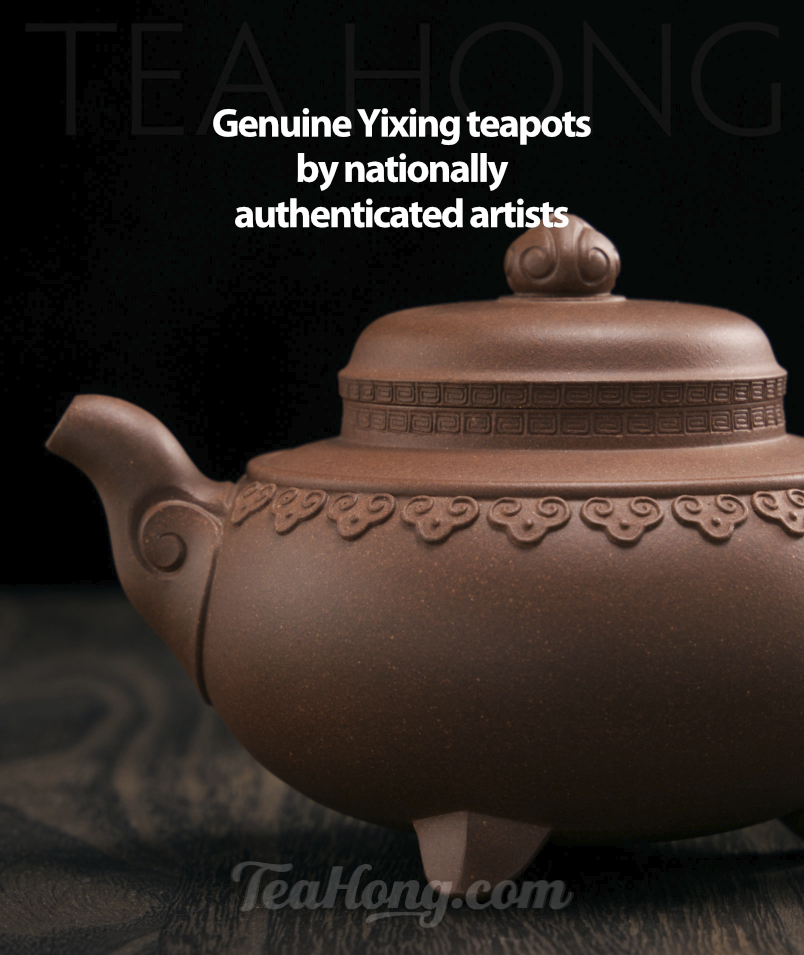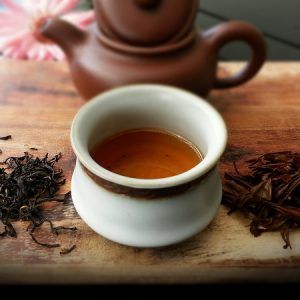Dianhong Golden, Yunnan’s Black Tea

Dianhong Golden typically shows fatter tips and tealeaves because of the physical characters of the fresh leaves from the cultivars employed. The surface and colour are duller than those of the others. Compare this with another traditional black tea that employ smaller leaves of cultivars of the sinensis subvariety in the gallery below
diān•hóng 滇紅
origin: Yunnan
Dianhong refers very generally to the black teas that are produced in the Yunnan province. The word “Dian” is an abbreviated name for the province used more popularly in official papers in the old days. Of the better black tea varieties produced in China, Dianhongs are probably the most affordably priced. This is particularly so when outstanding gongfu blacks from Fujian are beginning to be recognized and the price never stops climbing.
We shall look at a whole-leaf, traditional variety in this review rather than other “orthodox” or lower commercial grades.
feeding the resistance in the second world war
Black tea production in Yunnan began only after the Japanese invasion of China in 1938. Historically, black teas were produced in coastal or near coastal regions because they were meant originally for export. However, after Japanese occupied the eastern coastal regions, revenue from the export tea trade for the Kuo Min Tong Chinese government at that time could no longer happen. Along with all other trades and industries, tea was encouraged in the resistance zones that were the western parts of China, on the land mass that is linked with Indochina and South Asia. Access to the free world was more possible through Burma and India, and thus continual trading for the much needed supports for the war. Naturally the extensive virgin mountains in the southern counties of Yunnan province became good targets for new tea fields. Black tea factories, aiming at the export demand during the war, were setup. So began the history of Yunnan black tea, Dianhong.
cultivars of the assamica variety
The assamica variety of Camellia sinensis has always been a local plant in the region, which is still called the “Big Leaf” variety, i.e. “Daye” in Chinese. Left alone to grow, the plants can become trees with large trunks. These wild growing trees are found not only in Yunnan, but spreading to the mountains in all bordering countries.
Today, most wild cultivars and individual trees are used mainly for puers. Major production cultivars are derivative breeds from the native Menghai Daye or the earlier developed Yunkang. Their yields are characterized with distinctive hard and downy leaf shoots, which give the produced tea an outstandingly golden tippy look with bold pekoe shoots.
Dianhong Golden is the archetypical Yunnan black tea.
taste character
The other distinctive character of Dianhong Golden is its fresh, floral aroma, with the typical black tea malty base. I’d say if I don’t care about taste and texture, Dianhong Golden may well out-perform other fine black teas in aroma for the value.
The taste is a bit thin and slightly uneven, albeit sweet and lively. The good side of this aspect is its low astringency. Even mass market grades has this advantage, but it is only relatively so.
Comparing the infused leaves of a traditional quality Dianhong ( left ) and a machine processed tippy golden Dianhong
- The appearance of infused leaves tells something about the nature of the tea: traditional quality Dianhong Golden 滇紅金毫工夫紅茶
- The appearance of infused leaves tells something about the nature of the tea: machine processed orthodox Dianhong, tippy golden 滇紅金毫
buying tips
There are varieties that are almost totally golden tips and fetching a higher price. I personally do not recommend those because the taste is way too weak for a black tea and the floral aroma is not any better. Again, Dianhong Golden, like a fine Keemun, is a good tea for conventional infusion approach tea making, and not particularly great for the gongfu approach. It requires longer infusion time.
It is a great tea for small tea party where your guests would enjoy a finer black tea straight. Or as a side drink during work or meals. Go for a finer tea when you and your tea companion need a bit more depth and complexity.













